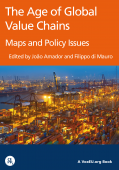Some books are hard to judge. I can’t decide whether [amazon_link id=”1107678943″ target=”_blank” ]An Economic Theory of Greed, Love, Groups and Networks[/amazon_link] by Paul Frijters with Gigi Foster is brilliant or barking. It looks appealing, an attempt to combine the good aspects of the theoretical rigour of choice theory based on self-interest with the realities of human emotions. Of course love and group identity shape our choices! The book has endorsements on the back from economists I greatly respect. Andrew Oswald calls it, “The most remarkable book I have read in the last decade…. a book that is intellectually taxing but unforgettable.” Jeffrey Williamson and Bruno Frey love it too. So embarking on reading this, I thought it was going to be in the rich tradition of the Adam Smith of [amazon_link id=”0143105922″ target=”_blank” ]Moral Sentiments[/amazon_link].
[amazon_image id=”1107678943″ link=”true” target=”_blank” size=”medium” ]An Economic Theory of Greed, Love, Groups, and Networks[/amazon_image]
Instead, it’s a more difficult and theoretical read. It’s best explained in a blog post by Paul Fritjers, who says:
“[W]e take the stance of aliens looking at humans as just another species, with love merely one behavioural strategy available to that species. Blasphemous as this may sound, our goal is to apply the scientific method to the realm of the heart.
At the most basic level, we contend that love is a submission strategy aimed at producing an implicit exchange. Someone who starts to love begins by desiring something from some outside entity. This entity can be a potential sexual partner, a parent, “society”, a god, or any other person or abstract notion.From a position of relative weakness, the loving person tries to gain control over this entity.”
In fact, there are four core concepts, including the fundamental one of self-interested choice (‘greed’), in this alternative decision theory. They are love, groups (and power relations) and networks. These concepts are selected from all the other possibilities social scientists have suggested as important in shaping economic choices, such as social norms, freedom, identity, institutions and so on. How they are selected is not fully explained; the author says it follows much work on the explanatory power of each as a potential core concept but I am puzzled about the selection and the mix of categories – emotions, social structures, descriptors of status. Nor did I ever really understand how ‘explanatory power’ was tested. One could say that any of these concepts is self-evidently important in some way in individual choices and social outcomes.
A large chunk of the book sets out this rather odd idea that love is a generalised ‘Stockholm syndrome’ (as Andrew Oswald describes it on the back), a means of getting something from a more powerful person or entity. Apparently, neuroscience says love is not an emotion and nobody is pre-programmed to love anything: “A child needs to be stimulated to develop the ability to love… Unlike many animals, humans do not necessarily love forever what they bonded with in childhood.” So the book goes on to explain the ‘evolutionary advantage of the love program’, and fits love into the mould of power relations. This takes the book onto a discussion of groups and power, and from groups to networks and markets. These sections touch on other, familiar areas of sociology and network theory.
Somewhere in the necessarily quite dense chapters on this wide-ranging material, I lost track of how the four core concepts lead us to a new choice theory. The final section of the book does look at how the new theory applies in familiar economic contexts. I focused on competition policy, and was disappointed to find that the consequence is to add not much to mainstream economic theory: “The view at which this book arrives regarding competition regulation is thus very close to the standard mainstream view in terms of the merits of any individual case. What is added is an understanding of who the regulator actually are and why they are there, what keeps them honest, where their power comes from, and what language affected parties will use in their appeals to regulators.” But how weird to add an understanding of the regulator and yet not an understanding of how big companies accumulate power and lobby regulators and politicians.
I think the book wants to rescue the fundamental assumption in economics of self-interested choice and make it relevant given all that we’ve learned about evolution, neuroscience and psychology in recent times. I thoroughly applaud this aim, because it is consistent with the evidence from evolutionary biology. Finding out how all this material across the disciplines can be married in a theory of decision making, on which economic models can build, is an important research agenda. This book is an ambitious effort to do so. It didn’t work for me, but now I’d like a lot of other people to read it and say what they think.

